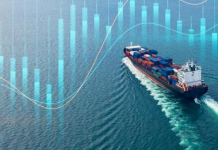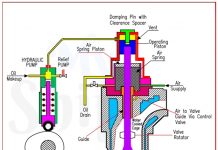
Q. Illustrate the provisions which relates to the establishing of procedures for identifying and testing of “critical” equipment under ISM code. On what basis are the list of critical equipment and systems made and on what factors are they dependent?
Answer –
A new chapter management for the safe operation of ships was added to SOLAS and the amendments introducing the new chapter IX entered into force on 1st July 1998. This chapter made mandatory the International Safety Management Code which established the following objectives
- to provide for safe practices in ship operation and a safe working environment
- to establish safeguards against all the identified risks
- to continuously improve safety management skills of personnel, including preparing for emergencies
Critical Equipment
- Critical equipment is equipment whose failure will lead to a potential hazardous situation or an accident, thereby causing injury to personnel or loss of life or damage to marine environment or property.
- As per “Element 10.3” of the ISM code, “Maintenance of the ship and equipment”: The Company should identify equipment and technical systems the sudden operational failure of which may result in hazardous situations. The safety management system should provide for specific measures aimed at promoting the reliability of such equipment or systems
- The SMS should provide for specific measures aimed at promoting the reliability of such equipment or systems.
- These measures should include the regular testing of standby arrangement or equipment or technical systems that are not in continuous use.
Hence SMS must have with respect to the critical equipment have procedures: –
i. To identify them
ii. To ensure their test and functional reliability
iii. To establish & use the alternative arrangements on sudden failures.
iv. To test the standby equipments
v. To assure that a single failure does not lead to the critical situation
vi. To assure that a system or equipment which is standby or unoperated or inactive for a certain time is tested regularly & before conducting the critical operation.
vii. There is always a minimum level of spares for the critical equipments.
- The list of the critical equipments or systems can vary according to ship type & operation.
- once identified suitable tests & other procedures should be developed to assure reliability.
The vessel specific guidelines called for the herein shall contain the following information about each critical component listed
i. Operational procedures to assure redundancy (i.e., two ship’s generators on the line while entering port).
ii. Rotation of the equipment (i.e., changing the lead steering pump each month).
iii. Periodic tests done on standby equipment (i.e., testing of the emergency generator).
iv. The preventative maintenance scheduled for the specific components.
v. Maintenance will be developed & planned based on the manufacturers’ maintenance instructions, prior maintenance history & operational experience
vi. The pieces of the equipment in the lube oil analysis program & the frequency of sampling
- Once a piece of equipment has been designated as a critical piece of the equipment, the spare parts associated with that piece of the equipment become items that need to be identified.
- Maintenance activities should be recorded in the Chief Engineer’s Maintenance Log (or in Wheelhouse system when functional). Each department head must assure that the maintenance performed by their departments is entered in this management system
CRITERIA FOR CHOOSING CRITICAL EQUIPMENTS AND OPERATION: –
There is something called critical score. which is product of probability of the equipment failure & total consequence value of the equipment. If the score is above 250 than it comes under the critical equipment..
- As per element 7 of the ISM code, the company must establish procedures for preparing plans, instructions, checklists for key shipboard operations related to the safety of the ship, & prevention of the pollution & safety of the personnel.
- Generally the criteria for choosing a critical equipment or operation lie as its potential to carry on to the hazardous situation.
- Hence a critical equipment or the operation is that whose direct failure will lead to an accident.
Hence with combination with element 10 the following shipboard equipment/ items are subjected to inspections & tests (but are not limited to)
i. Hull & superstructure steel work
ii. Safety, firefighting & LSA equipment
iii. Navigational equipment
iv. Steering gear
v. Anchoring or mooring gear
vi. Main engine & auxiliary engine
vii. Cargo handling equipment
viii. I.G. system
ix. Electrical installation
x. Fire detection & alarm system
SHIPBOARD OPERATIONS CAN BE CATEGORIZED INTO: –
Normal operation: – Error becomes apparent, only after occurrence of the hazardous situation.
Critical operation: – Error directly leads to the accidents. Critical operations will include (but are not limited to): –
i. Navigation in the restricted visibility
ii. Navigation in high density traffic area
iii. Navigation in restricted/ narrow area
iv. Heavy weather operation
v. Handling of hazardous cargo and noxious substances
vi. Bunkering and oil transfer operation at sea
vii. Cargo operation on oil/ gas/ chemical tankers
viii. Critical machinery operation like OWS, INCINERATOR, EMERGENCY FIRE PUMP etc.



